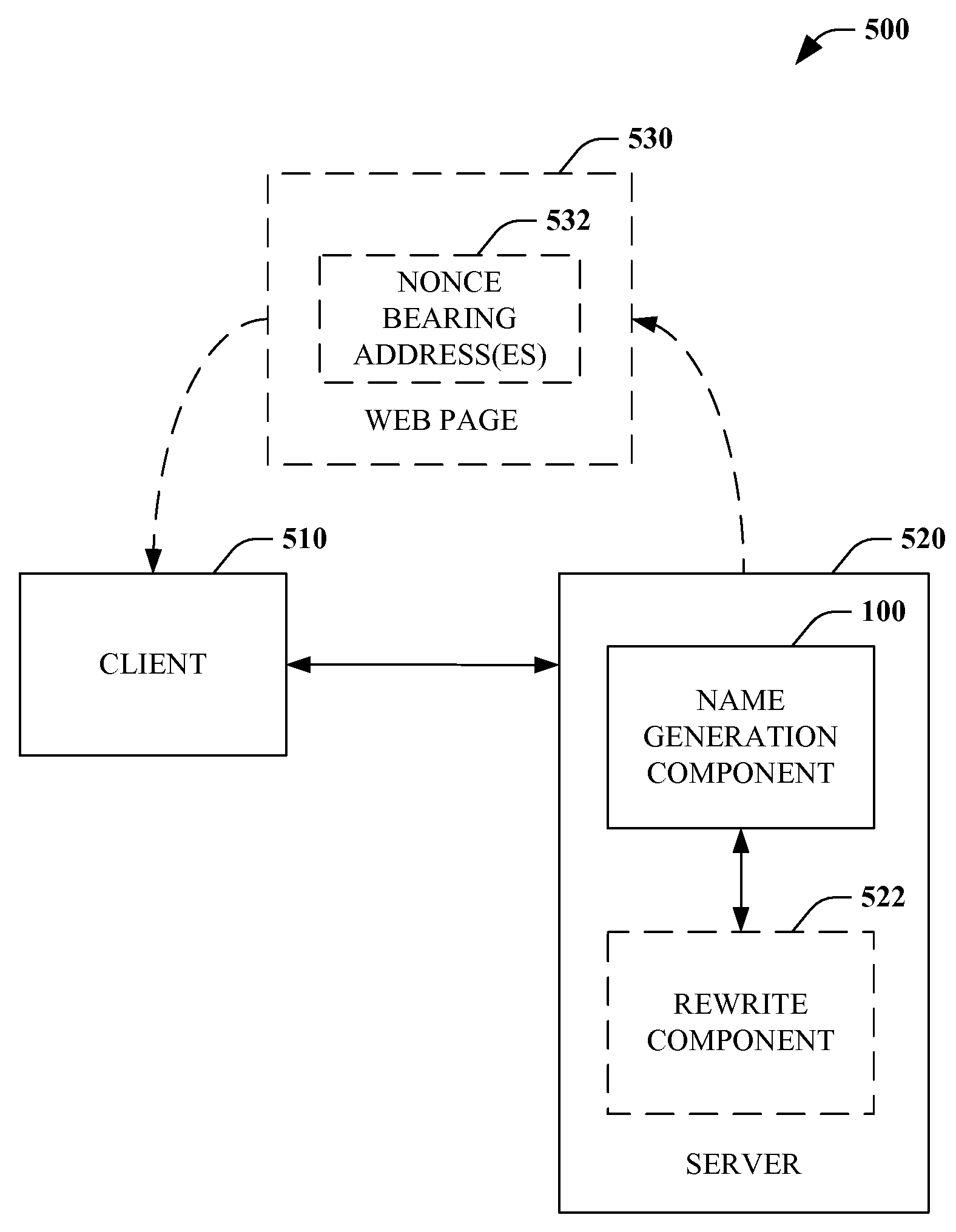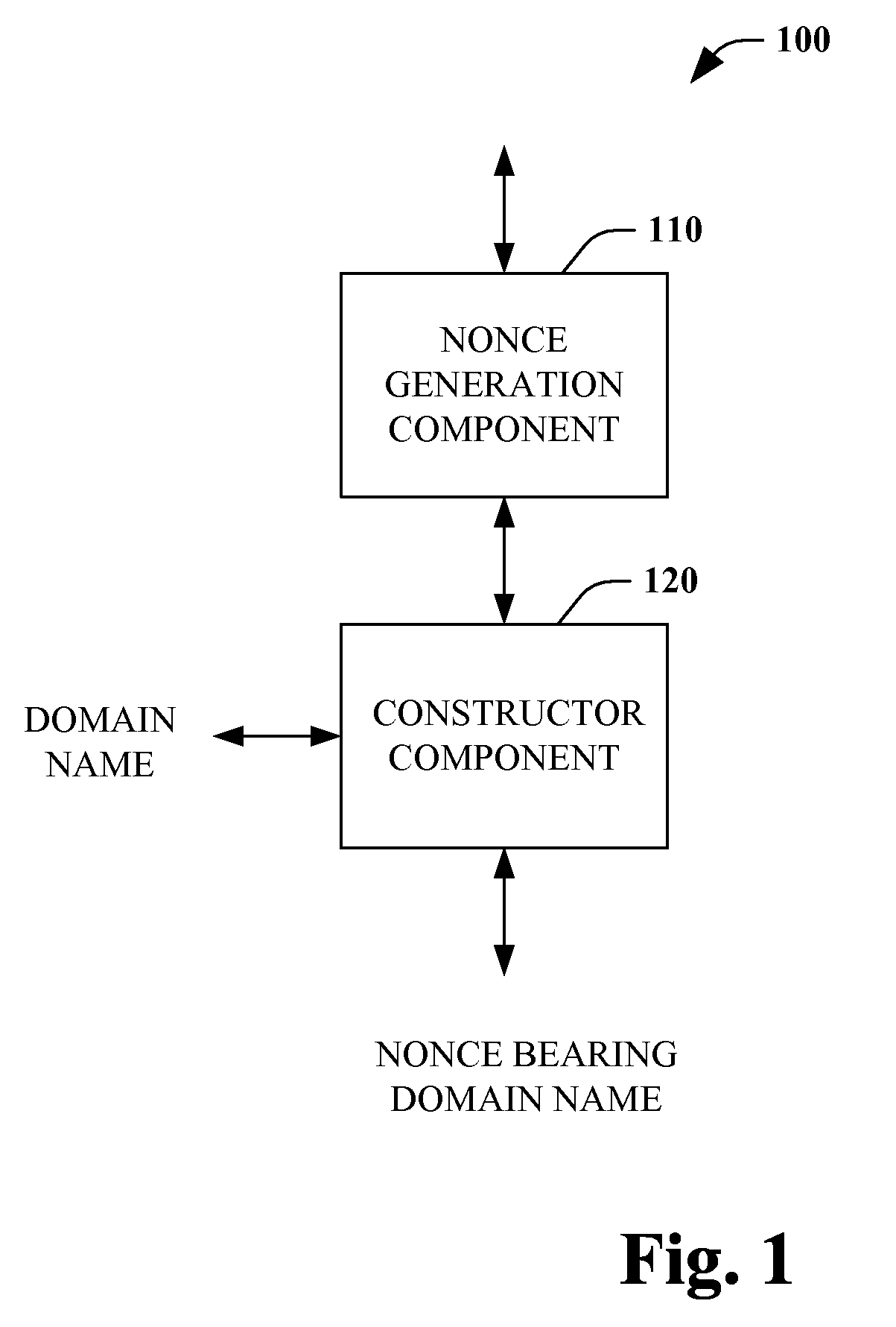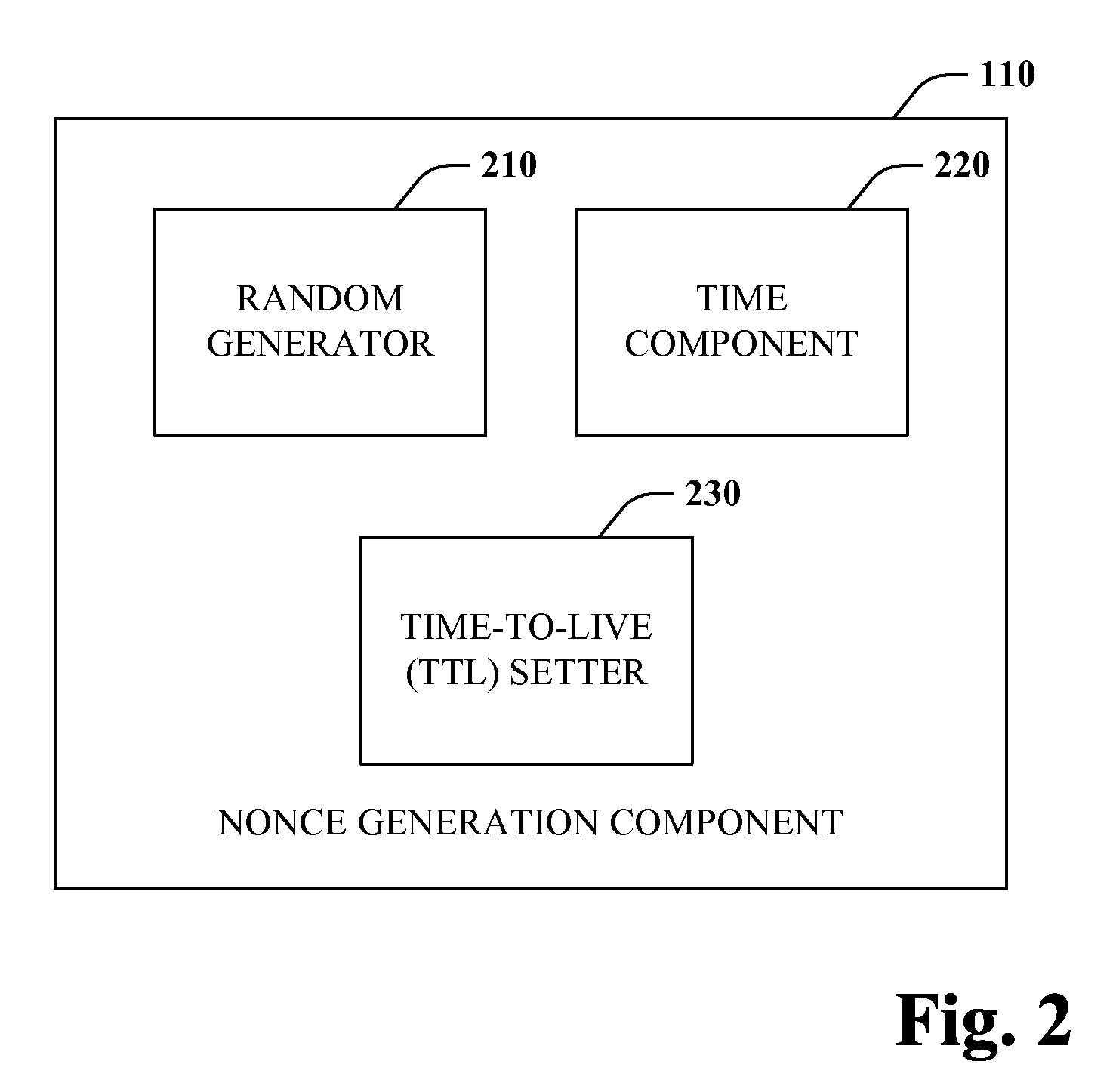Domain name cache control
a domain name and cache control technology, applied in the field of domain name cache control, can solve problems such as negative affecting the responsiveness to changes in mappings, and achieve the effect of avoiding spikes in demand
- Summary
- Abstract
- Description
- Claims
- Application Information
AI Technical Summary
Benefits of technology
Problems solved by technology
Method used
Image
Examples
Embodiment Construction
[0025]Systems and methods that pertain to controlling domain name caching are described in detail hereinafter. It has been observed that DNS records are being cached for lengthy periods of time including beyond specified expiration times (TTLs). As a result, mapping changes are not effectuated rapidly causing clients to experience delays, timeouts, or other failures.
[0026]Nonce-bearing domain names are employed to control DNS caching. More particularly, a unique identifier is generated and prepended to or otherwise included with the domain name to force propagation of a lookup to an authoritative server. Control is affected as a function of nonce-bearing name generation including the timing of the generation itself. Furthermore, time or phase shifting can be employed to effectively distribute load across an authoritative DNS server as well as improve response time, among other things.
[0027]Various aspects of the subject disclosure are now described with reference to the annexed draw...
PUM
 Login to View More
Login to View More Abstract
Description
Claims
Application Information
 Login to View More
Login to View More - R&D
- Intellectual Property
- Life Sciences
- Materials
- Tech Scout
- Unparalleled Data Quality
- Higher Quality Content
- 60% Fewer Hallucinations
Browse by: Latest US Patents, China's latest patents, Technical Efficacy Thesaurus, Application Domain, Technology Topic, Popular Technical Reports.
© 2025 PatSnap. All rights reserved.Legal|Privacy policy|Modern Slavery Act Transparency Statement|Sitemap|About US| Contact US: help@patsnap.com



